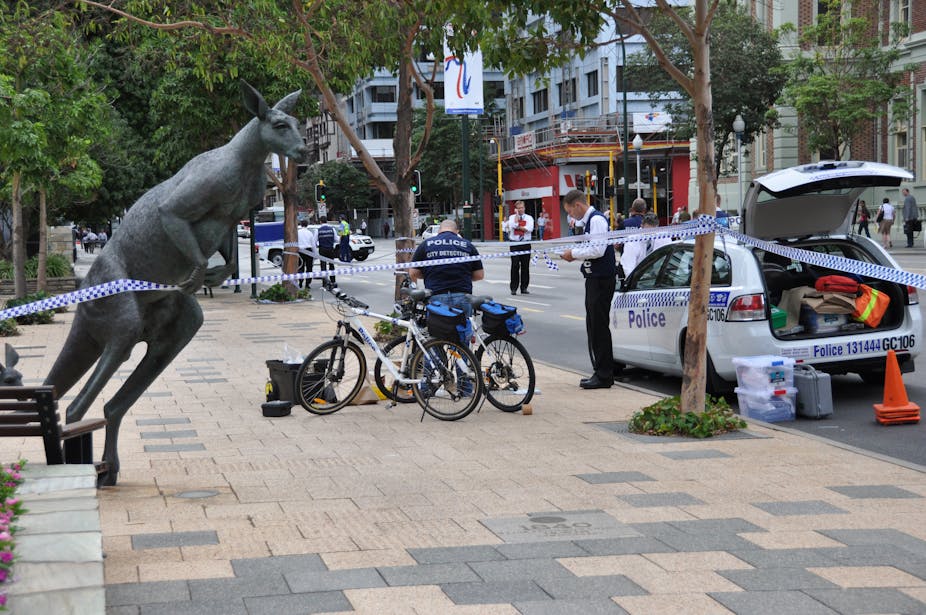FORENSICS AUSTRALIA – Jurors without technical training are frequently required to consider complex forensic evidence.
It’s not just a matter of understanding the forensic evidence: in the case of “opposing” experts called by defence and prosecution, the juror is expected to discriminate between, and critically evaluate, different interpretations of a particular set of data.
Crucially, a juror must then integrate that consideration into his or her assessment of the rest of the evidence at trial, giving the forensic evidence appropriate weight.
There is a strong school of thought suggesting jurors are incapable of understanding such evidence or of giving it appropriate weight in relation to other non-forensic evidence and that, no matter what resources are devoted to assisting jurors with this task, they will be unable to accomplish it with any degree of fairness.
CSI effect
The so-called “CSI Effect” relates to fears often expressed, usually without anything other than anecdotal evidence, that jurors will:
- demand scientific testimony
- acquit (wrongly) if it’s not made available
- be unduly influenced by such testimony
- uncritically give it more weight than other evidence
- accept it unquestioningly
- be unable to understand it
- be influenced by the most articulate expert and
- be unable to critically evaluate it.
Others believe juries’ abilities may be underestimated.
In Australia, forensic evidence is coming under increasing scrutiny, largely due to the growing importance of forensic evidence in the detection and prosecution of crime, including the advent of DNA testimony.
As a science-trained barrister, I have seen important forensic testimony used in trials without any apparent understanding of the scientific issues by judge, lawyers and therefore, one might think, juries. The forensic expert has left the courtroom, shaking his or her head, and asking me: “What was that all about?”
In 2006 I examined the manner in which jurors deal with forensic evidence: how they perceive it, process it, tackle understanding it individually and collectively, apply it to the facts of the case, integrate it with and weigh it in relation to other evidence.
I was permitted access to real jurors after real trials – something which is normally against the law.
The outcome of the study was that jurors are more sophisticated than they are often given credit for, and do consider such issues as bias, congruence of the forensic evidence with other evidence in the trial, and the expert’s basis for his or her opinion, including an evaluation of their reasoning process.
There are encouraging, though sometimes mixed, messages about the CSI effect. One juror in my study commented on the absence of DNA evidence in a murder trial:
“We were so upset that … they never did the nail scrapings. It leaves us jurors thinking ‘why not?’ … on TV they say that they can get DNA … There was all these questions that we asked.
”… it was such a hard case anyhow, but we thought: ‘oh well, if they’ve got DNA we’ll be fine. It will just give us the answers’ … if he had DNA under his fingernails because of the fighting … belonging to someone else, then we’re going to know …“
This same juror thought an explanation about how DNA is gathered, and the difficulties of doing this, would have helped considerably.
"All they said to us was: ‘it’s not like it is on TV’ but that isn’t really explaining … On TV they show us that you can get DNA out of that bit of blood. Can you? Can’t you? Do you need this, do you need that?”
Jurors were alive to the possibility of unconscious or conscious bias. And although some were unhappy the expert could not give a definitive solution to the case, others were aware this was not possible and appreciated the expert’s limitations.
Here’s how one juror summed up the role of the expert:
“To provide a scientific or technical or a knowledgeable … explanation of a circumstance that occurred and why it occurred and how it occurred and probabilities about it, but not to actually pinpoint something. It’s not their job to say that’s what did it without a reasonable doubt.”
A strong theme I noticed was that jurors are very careful not to just accept forensic evidence at face value but to look to see what other aspects of the evidence supported or contradicted the forensic evidence and assess all evidence on that basis.
Indeed, my interviews with Western Australian jurors strongly supported the proposition that all evidence, forensic or otherwise, is considered and given appropriate weight.
There seems to be a “tech effect” rather than a CSI effect, with jurors willing to tackle and come to grips with forensic evidence, without being bedazzled by it.
In other words, jurors are not “put off” by scientific evidence, but are ready to grapple with it and make a real effort to understand.
It’s ironic that judges and lawyers (in my experience) often doubt the ability of jurors to cope with forensic evidence, and yet they have formed this view without any evidence themselves, because of the prohibition on speaking to real jurors after trials about their deliberations.
Maybe jurors are smarter than the average bear, maybe they are not: the jury’s still out …
This is part five of The Conversation’s Forensics Australia series.
Read part one here. Read part two here. Read part three here. Read part four here.

